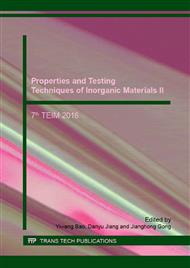p.3
p.8
p.13
p.18
p.23
p.28
p.33
p.38
Effect of Preparation Process on Bending Modulus and Strength of Fiber Tubes in Radial Direction
Abstract:
To explore the effects of preparation process on the mechanical properties of fiber reinforced tubes in radial direction, the closed ring method was applied to assess the elastic modulus and bending strength of GFRP and CFRP prepared by winding method and pultrusion method, respectively. The results indicate that there are two obvious differences between the winding tube and the pultrusion tube: i) the elastic modulus and bending strength of the winding tube for two materials are larger than that of the pultrusion tube. It should be attributed to the position of materials under stress: the former is the fibers while the latter is the matrix; ii) the failure mode for the winding tube is brittle fracture while elastic-plastic fracture is for the pultrusion tube. Compared with other experimental methods, the results of the closed ring method are accurate and reliable, which is demonstrated to be a potential method to evaluate the mechanical properties of fiber tubes in radial direction rapidly and conveniently.
Info:
Periodical:
Pages:
3-7
Citation:
Online since:
January 2017
Authors:
Price:
Сopyright:
© 2017 Trans Tech Publications Ltd. All Rights Reserved
Share:
Citation:


